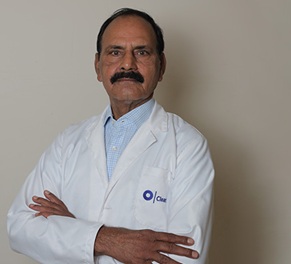Sleeve Gastrectomy Surgery: Procedure, Steps and Recovery

Treatment Duration
60 Minutes
------ To ------70 Minutes
Treatment Cost
₹ 2,00,000
------ To ------₹ 5,00,000

The Sleeve Gastrectomy is a Bariatric Surgery performed for weight loss. In this procedure, 70%- 80% of the more significant curved stomach portion (called the fundus) is removed surgically. The new smaller stomach in the size and shape of the banana is left behind. It is also called a "vertical sleeve gastrectomy". The sleeve gastrectomy is a simple and effective weight loss procedure.
It is an irreversible procedure. The sleeve gastrectomy limits the stomach size, restricting the amount of food consumed. It gives you a feeling of fullness after eating a small portion. It also reduces the release of the hormone “ghrelin”, which gives the feeling of hunger.
|
Surgery Name |
Sleeve Gastrectomy |
|
Alternative Name |
Vertical Sleeve Gastrectomy |
|
Disease Treated |
Lose excess weight and reduce risk of potentially life-threatening weight-related health problems. |
| Benefits of the Surgery | Experience far less hunger, Eliminate sleep apnea, Reduce and eliminate back and joint pain, Feel less dependent on medication. |
|
Treated By |
Laproscopic Surgeon |
You can check Sleeve Gastrectomy Surgery Cost here.
Anatomy and Physiology of the Stomach
The stomach is the muscular sac-like organ. It is present in the upper part of the abdomen. The four main regions in the stomach are:
- Cardiac: It is the point where the oesophagus connects to the stomach. The food enters through the cardiac into the stomach.
- Fundus: It is the larger dome-shaped part of the stomach
- Body: Below the fundus lies the body, which is the main part of the stomach
- Pylorus: The funnel-shaped part which connects the stomach to the duodenum.
The Stomach is made of 4 layers:
- The innermost layer is the Mucosa. It secretes mucus which protects the stomach from its acids.
- The second layer is the Submucosa. It surrounds the mucosa. It is made of blood vessels, nerves, and connective tissue. It provides support to the mucosa and controls secretions and movement of food through the stomach.
- The third layer is the Muscularis Externa. It has the most mass and protects the mucosa and submucosa. Finally, the outermost layer is called Serosa. It protects the stomach from other organs and food inside.
Expert Doctors (10)
NABH Accredited Hospitals (10)


Who needs Sleeve Gastrectomy?
The doctor may suggest you sleeve gastrectomy when:
- The patient has a body mass index (BMI) of 40 or more, increasing the chances of serious health risks. A normal BMI should be between 18.5 to 25.
- If you have a severe medical disorder such as heart disease, obstructive sleep apnea, lung problems, liver problems, or type 2 diabetes.
- If you want to lose weight and cannot do so through exercise and diet
- It May be used as a bridge to Gastric Bypass Surgery.
How is Sleeve Gastrectomy performed?
The sleeve gastrectomy is performed laparoscopically in the following steps:
- Firstly, the doctor will give you general anaesthesia. It is to make the surgery painless, comfortable and to make you sleep.
- Then the surgeon makes the 2 to 5 small incisions in your abdomen.
- A tiny camera and instruments needed to perform the surgery are inserted through these cuts.
- The camera inserted is connected to a video monitor. It allows the surgeons to view your abdomen clearly while doing the operation.
- Then, the surgeon will administer the harmless gas into the belly. It expands the abdomen and gives the surgeon more space to work.
- Once done, the surgeon will insert a bougie tube into the stomach.
- The surgeon will remove a significant portion of the stomach.
- Later, the remaining stomach portions are joined together using surgical staples. Finally, it leaves the new banana-shaped stomach, about 20-25% of the original size.
- The tools are removed once the stomach is dissected and stapled.
- Finally, the surgeon stitches the cuts closed.
What to expect before and on the day of
Before the Surgery
- The doctor will ask about your family history and perform some tests. It is to make sure that you are healthy enough to have surgery.
- The doctor may advise a complete physical examination, blood tests, and an ultrasound of your gall bladder. It is to determine that other medical problems such as Diabetes, blood pressure, and heart problems are under control.
- The doctor will explain to you in detail the procedure of the surgery and the results you can expect after surgery. The doctor may ask to stop the blood-thinning medicines a week before surgery.
On the day of the Surgery
- You should follow all the instructions as directed by the surgeon. You should take the medicines as advised by the doctor with a small sip of water.
- Clean and shave the pubic area.
- Reach the hospital at the time.
- You should not wear any jewellery. The doctor will ask you to change into a hospital gown. Once done, you will be shifted to the operation theatre.
What to expect after the Surgery?
After the Surgery
- The surgery takes about 60 to 70 minutes to complete. After the surgery, you will be shifted to a recovery room.
- The medical staff monitor your condition to look for any complications.
- You will be made to walk 3-4 hours after the surgery.
- You will be discharged from the hospital after 1 or 2 days. The surgical team will perform some tests before discharging.
- The doctor will prescribe you some painkillers and antibiotics before the discharge.
- The doctor will ask you to be on a sugar-free liquid diet for the first seven days after the surgery. Then you will progress to the pureed foods for at least three weeks.
- After four weeks, you will be shifted to regular food.
- You will be on multivitamins twice a day, calcium supplements once a day, and vitamin B injections once a month for life.
First Follow up Appointment
You will need to visit the doctor for the first follow-up one day after a discharge. The doctor will evaluate your health and will check for any complications. In addition, the doctor may perform some blood tests and exams. You will have frequent medical check-ups and follow-ups in the first several months after surgery. It is to ensure that everything is on track, including:
- Weight loss
- Encourage regular exercise
- To make the necessary adjustment to diet and medications
- To determine any potential risks if arising
- Track the obesity-health status
- Understand diet and any possible eating disorder
Risks of delayed Sleeve Gastrectomy?
The sleeve gastrectomy is performed for weight loss. Delaying the procedure increases the risks and complications of severe obesity-related health problems such as:
- Chronic diseases like hypertension, type 2 diabetes, high cholesterol, asthma, and joint pain
- Fatty liver disease
- Obstructive sleep apnea
- Risk of Cancer
- Polycystic Ovary Syndrome in women
- Improvement of Obesity-Related Health Problems
- Migraine
- Urinary incontinence
- Infertility
- Depression
- Social and psychological problems
When is doctor's consultation needed?
Kindly consult your doctor if you see any complications after the surgery. Some of the risks and complications associated with gastric sleeve surgery are:
- Bleeding
- Infection at the site of operation
- Leaking of stomach juices from the staple line
- Blood clot
- Heartburn
- Pain and Fever
- Weight regain
- Poorly absorbed nutrients leading to vitamin deficiency
- Stenosis
- Narrowing of the inside diameter of the operated stomach
Vertical sleeve gastrectomy is not a surgery that quickly fixes the weight. You need to significantly alter your lifestyle along with it.
Cost of the Procedure
The cost of Sleeve Gastrectomy ranges from ₹2,00,000 to ₹5,00,000. The cost varies based on the following factors:
- Type of Sleeve Gastrectomy surgery
- Age of the patient
- The medical condition of the patient
- The type of hospital facility availed - individual room or shared.
| Procedure Name | Cost Value |
| Sleeve Gastrectomy | ₹2,00,000 to ₹5,00,000 |
Frequently Asked Questions (FAQ)
What are some Myths and Facts about Sleeve Gastrectomy?
- Myth: There would be no restriction on my diet after sleeve gastrectomy.
Fact: Many people think that as they have removed a larger portion of their stomach, they can eat anything they want. However, a healthy and balanced diet and exercise are essential to maintain the weight loss achieved through surgery.
More Treatment options
Last Updated on: 30 October 2023
Author
HexaHealth Care Team
HexaHealth Care Team brings you medical content covering many important conditions, procedures falling under different medical specialities. The content published is thoroughly reviewed by our panel of qualified doctors for its accuracy and relevance.
Sleeve Gastrectomy Surgery Cost in Top Cities






















